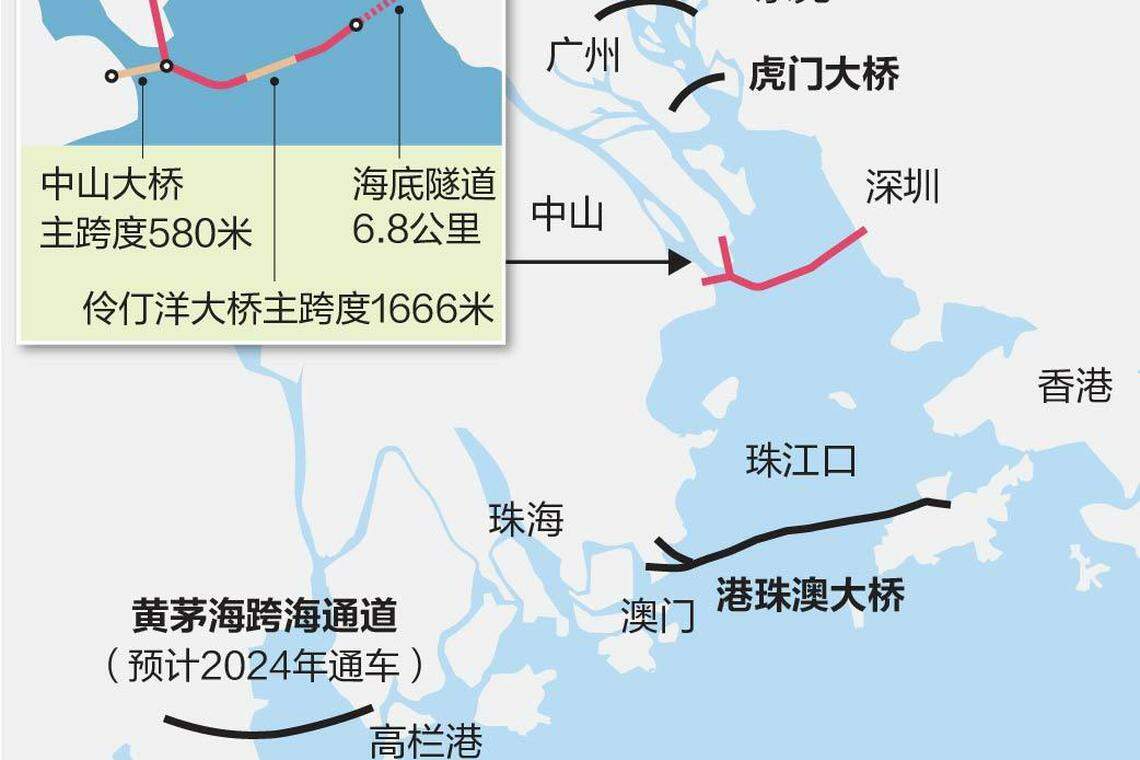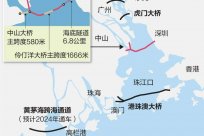
The Shenzhen -Macao Greater Bay Area Super Engineering Shenzhen Channel's Underwater Underwater Tunnel Tuesday (November 28) penetrates, which means that the main line of the Shenzhen -Middle Channel is across the board.This project that spans the Pearl River Delta is expected to open to traffic in the second half of next year, and it will become an important traffic bond of the city's city groups from the Eastern and West Straits of the Pearl River.
According to the WeChat account of the "Shenzhen -Middle Channel", the Shenzhen -Middle Channel held the main line through and ending engineering construction mobilization meeting on Tuesday.On the morning of the same day, the concrete pouring of the underwater tunnel pipe was completed, marking the construction stage of the construction of the Shenzhen -Middle Channel in 2024.
The Shenzhen -Middle Channel is another cross -sea cluster project after the Hong Kong -Zhuhai -Macao Bridge. It integrates "bridge, islands, tunnels, and underwater interoperability". It is the core transportation hub of the Guangdong -Hong Kong -Macao Greater Bay Area.The project across the strait of the Pearl River Estuary, China Unicom, Nansha, and Zhongshan, Shenzhen, Guangzhou, and Zhongshan. After completion, it will form the Greater Bay Area cross -sea crossing channels with the current Hong Kong -Zhuhai -Macao Bridge and Nansha Bridge.
The deep and middle channel of 24 kilometers in length is also one of the world's most challenging cross -sea projects. Among them, the bridge part is about 17.1 kilometers long and the submarine tunnel is about 6.8 kilometers long.In 2015, the National Development and Reform Commission of China officially approved the project and began construction in December 2016. It has been over six years.
After the main line is fully connected, the Shenzhen -Middle Channel is planned to have traffic conditions in June next year, and it is expected to be put into use in the second half of the year.After the official opening, the driving time in Shenzhen and Zhongshan will be shortened from the current two hours to 20 minutes.
Professor Chen En, a professor at the School of Economics of Jinan University, pointed out in an interview with Lianhe Morning Post that as another important transportation hub between the east and west sides of the Greater Bay Area, the Shenzhen -Middle Channel will make up for the shortcomings of the Hong Kong -Zhuhai -Macao Bridge.Important supplements and extensions of the district traffic network.After being put into use, the Shenzhen -Middle Channel will be parallel to the Hong Kong -Zhuhai -Macao Bridge. In the future, it will form a transportation network equivalent to a parallel quadrangle in the Pearl River Estuary, which is of great significance to the construction and development of the Greater Bay Area.
Chen En also pointed out that the Hong Kong -Zhuhai -Macao Bridge is connected to Hong Kong, Zhuhai and Macau. The traffic involves entry and exit. It has specific requirements for the licenses of driving vehicles.It is foreseeable that after the Shenzhen -Middle Channel is opened to traffic, the traffic volume is more, and the utilization rate and traffic efficiency will be higher.
Shenzhen's "radiation west" was limited by the transportation bottleneck of the Pearl River Estuary, and the completion of the Shenzhen -Middle Channel is expected to change this situation.According to the Outline of the Reform and Development Planning of the Pearl River Delta region of the State Council of China, the Shenzhen -Middle Channel is an important traffic link between the three major functions of the Pearl River Delta "Shenzhen Wanhui" and "Pearl Zhongjiang" to communicate with the three major regions of the Guangdong Free Trade Zone and the Pearl River Delta.The convenient channel leads to western Guangdong and even the southwest.
Chen En pointed out that the Shenzhen -Middle Channel will directly promote the connection and development between Shenzhen and Zhongshan. In addition, as a channel connecting the eastern Guangdong and western Guangdong, the project will help guide the east bank of the Pearl River EstuaryExpand to the West Coast, radiation has driven the development of the western region, and further promotes the integration and balanced development of the Guangdong -Hong Kong -Macao Greater Bay Area.



